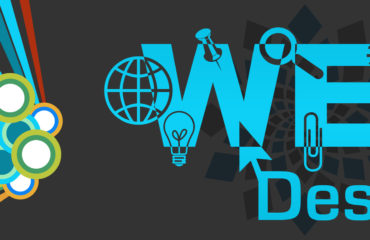The first impression your website gives is more important than you think. In fact, 38% of people will stop engaging with your site and move on to another if the content and layout is unattractive.
Knowing this, it stands to reason that having great imagery on your site is extremely important.
However, there’s a lot more to it than just finding great looking images and gracefully integrating them into your web design. They must also go through optimization before they ever reach the internet.
Optimizing your website imagery does a number things, all which benefit the overall performance and user experience.
Whether you’re working on your site design yourself or collaborating with professional web designers, it helps to stay educated. That’s why we’re discussing how to optimize your website imagery for better performance.
Image Quality
Before we start talking about the technical aspects of optimizing images for your site, let’s discuss quality.
Your website imagery conveys a certain tone or even provides information. It also has a big part in a business’s brand identity. Regardless of the direction of your site, your images need to look great.
Images also help improve your site’s user experience, which is extremely important today. The average user only spends 15 seconds on a website, so your images need to make a good impression fast.
When choosing images for your site, you must ensure they’re high quality. You should also try to stay away from stock photos. People are very critical of websites and may click away if yours looks generic or outdated.
Instead, your images should help set you apart from the competition and make you unique. Consider hiring a professional photographer to take custom pictures for your site.
Once you have high-quality, unique images, it’s time to optimize them.
Using the Right File Type
When working with website imagery, you’ll likely use either JPEG or PNG. This component may seem irrelevant, but when integrated into web designs, the file type can affect the way an image displays and alter the speed of your site.
For photographic imagery, you need to use JPEGs. This file type is able to handle the large number of colors that photos contain, and they do this with a small file size.
For graphic images, such as logos, charts, or infographics, you should use PNG. This file type handles sharp lines and text with efficiency. The file size is bigger, so be sure to compress them as much as possible without degrading the quality.
You’ve probably come across countless websites that take ten or more seconds to load. In digital age time, this is an eternity.
It’s a good chance this is happening as a result of large file sizes which make pages heavier and harder to load.
Your Naming Convention Matters
You may be inclined to name your website imagery something generic or instinctual like “Photo5.JPEG.” It turns out the actual name of the file can help your SEO efforts. That generic naming convention isn’t doing you any good.
Words play a huge role in getting good search engine rankings. That’s why adding keywords to your content is so important. The same thing applies to image files.
When search engines index the internet, they scan the code of a website. This means they see the file name of every image used on a site. All this data helps them rank websites.
Because search engines don’t actually see your website imagery, it helps to tell them what the image is through your naming convention.
In addition, you can even sneak keywords into the naming convention of your images. Think of it as another place to get SEO traction. Just try to keep it as relevant to the actual image as possible.
The Alt Tag
Another thing search engines use to determine a website’s ranking is the Alt tag. This is a small bit of code that’s associated with every image on your site.
Like the file name, the Alt tag acts as an identifier for the image. But it also has an SEO function as well.
The last thing you want to do is leave your Alt tags empty. Not only are you not giving search engines information about the image, you’re not taking advantage of keyword placement.
For example, if you’re adding a product image to your site, you’ll want to succinctly describe the product in the Alt tag. But you can also go a little further and add the name of your company.
This helps search engines more effectively catalog and rank your site. Just remember not to get too spammy with it. Adding too much information could end up getting you penalized.
Be Consistent
You can (and need to) remain consistent with your website imagery in a number of ways.
From a design perspective, a site with consistently proportioned images looks better. They also help frame the content area and don’t distract the visitor’s eye while reading the text.
This is especially important for product pages. You don’t want different images with different sizes and resolutions.
You also need to remain consistent with the file sizes throughout your website. If you don’t, you risk certain pages loading slower than others.
If you find that your site has slow load times throughout, you may need to compress each image to reduce file sizes. You should see a marked increase in speed.
Seek the help of a professional web designer if you’re having trouble with image sizes and compression.
Optimize Your Website Imagery for Better Performance
If you’re looking to overhaul your website or have plans for an entirely new one, make sure you’re optimizing every image. We’re inundated with imagery and information all day now. You can’t afford for your website to fall behind the curve.
You also owe it to your site to perform image optimization. In the eyes of search engines, a fully optimized site has more authority. Don’t let your imagery become a liability.
We offer a full range of web design and digital marketing solutions. Contact us to learn more.





